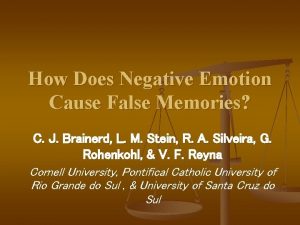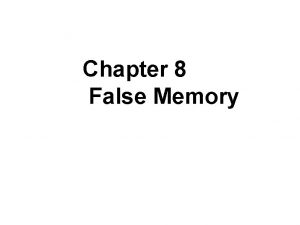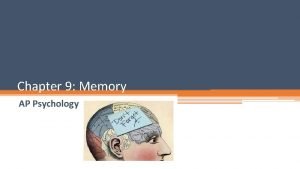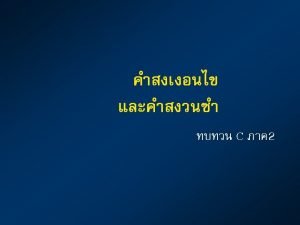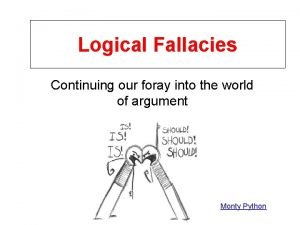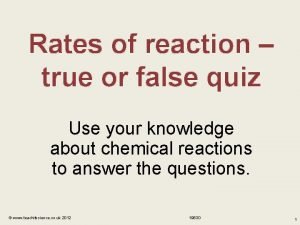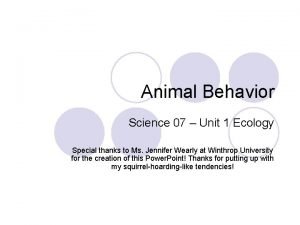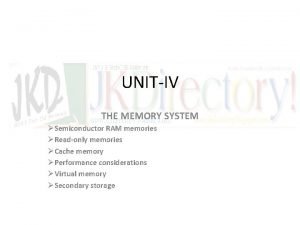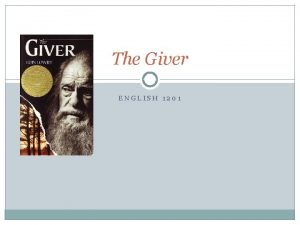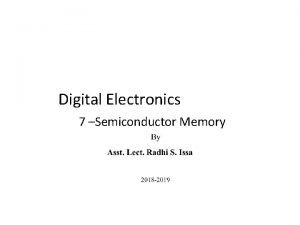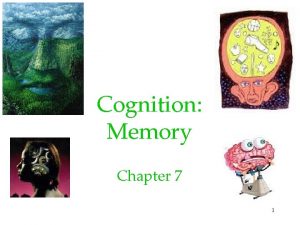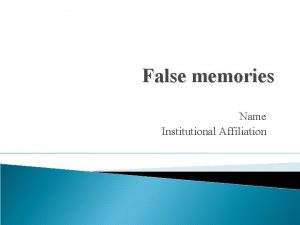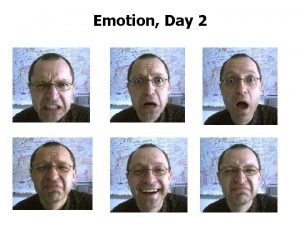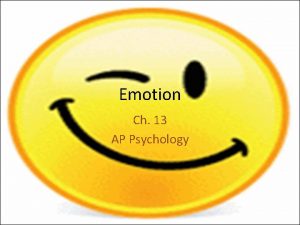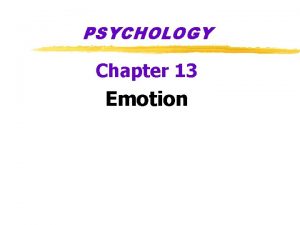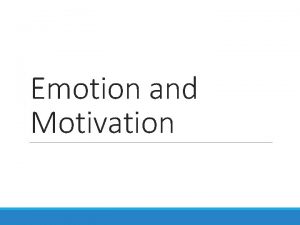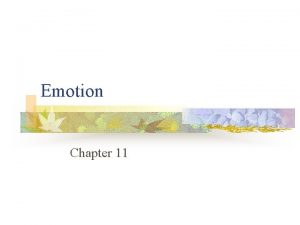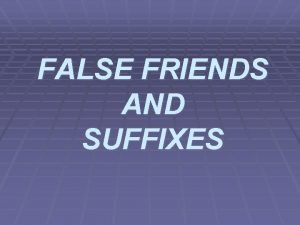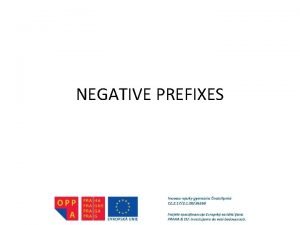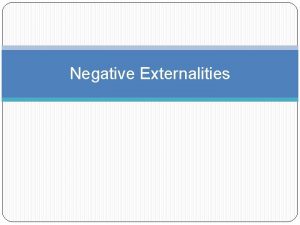How Does Negative Emotion Cause False Memories C

















- Slides: 17

How Does Negative Emotion Cause False Memories? C. J. Brainerd, L. M. Stein, R. A. Silveira, G. Rohenkohl, & V. F. Reyna Cornell University, Pontifical Catholic University of Rio Grande do Sul , & University of Santa Cruz do Sul

Emotion, Memory Distortion, and Memory Evidence in Crimes - The bulk of criminal evidence (investigations & trials) consists of memory reports (e. g. , oral interviews, written narratives, telephone conversations, e-mails, eyewitness identifications, interrogations, depositions, trial testimony) - A common feature of such reports is that emotional content is involved: - - Criminal events are inherently emotional Memory reports are often given in circumstances that are fraught with emotion (police interviews, interrogations, sworn testimony) Hence, whether and how emotional content distorts memory is a fundamental question when it comes to the reliability of evidence

Basic Scientific Distinctions About Emotional Content The 2 -dimensional model of emotional content - It’s valenced (has a definite positive/negative, pleasant/unpleasant quality) It’s physically arousing rather than calming - Data: Variations in valence and arousal affect memory performance differently (cf. Kensinger, 2004) - Variations in valence and arousal have different brain signatures - - Valence = LVLPFC, MPFC, & RVLPFC activation Arousal = L & R amygdale activation Recent work has stressed that specific emotions (anger, sadness) may have unique semantic content [but that’s a story for another day]

Classic Ideas About How Emotion Affects Memory for Events - Dr. Johnson effect (“When a man knows he is to be hanged in a fortnight, it concentrates his mind wonderfully. ”) Scientific version: Negative content focuses attention on target events, improving verbatim memory and suppressing false memory - Go with the flow (e. g. , Storbeck & Clore, 2005) Positive content enhances meaning extraction, increasing false memory but leaving true memory unchanged - - So, classic ideas add up to - - Memory enhancement by negative emotion Memory distortion by positive emotion But, notice that these ideas are just about valence – arousal is missing in action

Fuzzy-Trace Theory & Emotion - - Dual-trace theory of false memory Verbatim traces of actual events: They support true memory and suppress false memory. Gist traces of meaning content: They support false memories of meaning-sharing events and true memories. FTT’s take on emotion Valence is mainly a gist dimension, in 2 senses: Positive or negative valence is a concept in itself (“my junior prom was the pits”) but valence may also stimulate memory for other meaning content. [Think of it on analogy to semantic orienting tasks. ] Arousal is mainly a verbatim interference manipulation. (Sorry, Dr. Johnson. ) Heating up the amygdale generates off-task noise that impairs verbatim memory for actual events. [Think of it on analogy to dual-task deficits. ] Negative valence stimulates semantic processing, relative to positive or neutral, producing stronger gist memories. So, memory distortion is maximized by negative valence. Caveats about the elderly and about children will be needed later.

How is Emotion-Induced Memory Distortion Studied in the Lab? - Separate emotion from study/test materials via mood induction before study; administer neutral study/test materials Storbeck & Clore (2005); Bauml & Kuhbandner (2007); Corson & Verrier (2007) Put the emotion in the study and test materials, as it is in crimes (e. g. , Budson et al. , 2006; Brainerd et al. , in press) - - Today’s experiments

Today’s Experiments - - 2 experiments 1 in Portuguese (Brazilian undergrads) 1 in English (American undergrads) Basic design: Study several “emotional” DRM lists Respond to conjoint recognition tests

Today’s Experiments - Emotional DRM lists First 15 forward associates of a negative word (e. g. , hungry, lie, thief), a neutral word (e. g. , fruit, teacher, window), or a positive word (e. g. , baby, god, hug) Associates are presented as study words but the generating word is not Generating words appear on memory tests as false memory probes Arousal is controlled across the 3 valence types

Today’s Experiments - Conjoint recognition tests Test probes: true (school), false (teacher), unrelated (lake – measures response bias) Questions: verbatim = word on the list? gist = related to a word on the list? verbatim + gist = either a word on the list or a related word? Math model: extracts measures of verbatim and gist memory, for both true and false items, from this 3 x 3 matrix

Combined Data (Signal Detection) of the Brazilian and U. S. Experiments

Combined Data of the Brazilian and U. S. Experiments

What the Data (d′) Show About Valence-Induced Memory Distortion - False memory is elevated by negative valence, relative to neutral valence. False memory is lowered by positive valence, relative to neutral valence. Net memory accuracy (d′ true - d′ false) is increased by positive, relative to neutral. Net memory accuracy is decreased by negative, relative to neutral. When valence is negative, memory is net inaccurate: The sign of d′ true - d′ false is negative.

Valence Effects on Verbatim and Gist Memory

Modeling Data: What Valence Does to Gist and Verbatim Memory - False memory probes: Gist support for false items increases as we move from positive to neutral to negative. Verbatim suppression of false items decreases as we move from positive to neutral to negative - True memory probes: Gist support for true items increases from positive to neutral, but not from neutral to negative. Verbatim support for true items varies only slightly across the 3 valence conditions

The Story So Far for Negative Valence - It increases false memory hugely and decreases net accuracy (because true memory does not increase nearly enough to compensate). - This is mainly a gist-memory effect. Negative valence is an especially good gist that is preferentially processed. - The distortion effects are valence-specific: Positive valence actually reduces false memory and increases net accuracy.

The Story So Far for Negative Valence Arousal now needs to be folded into the valence picture We’re working on it - - CEL norming project It looks like arousal amplifies gist processing (increasing false memory) when valence is positive

Two Caveats About Vulnerable Populations Older adults, who are frequent victims of certain types of crimes: - Display positive gist-processing preferences, rather than the negative preferences of younger adults (Mikels, Carstensen). So, it is likely that negative distortion effects will morph into positive ones in late adulthood. Recent data from our labs and Mikel’s lab confirm this prediction. Children, who are also frequent victims of certain types of crimes: - Display lower levels of false memory when distortion depends on extracting the gist of experience (Brainerd, Reyna, & Ceci, 2008). So, it is likely that negative distortion effects will be absent or greatly attenuated in children and emerge with development. Recent data from our labs confirm this prediction.
 Positive story
Positive story False memories chapter 8
False memories chapter 8 Misattribution psychology
Misattribution psychology True or false true or false
True or false true or false Slidetodoc
Slidetodoc Amphiboly fallacy examples
Amphiboly fallacy examples Rates of reaction quiz
Rates of reaction quiz Ter thin client
Ter thin client Proximate cause and ultimate cause
Proximate cause and ultimate cause Proximate and ultimate behavior examples
Proximate and ultimate behavior examples Difference between innate and learned behavior
Difference between innate and learned behavior Semiconductor ram memories
Semiconductor ram memories How does the approaching ceremony of twelves affect jonas?
How does the approaching ceremony of twelves affect jonas? Take out a piece of paper
Take out a piece of paper Irvine valley memories
Irvine valley memories Memory digital electronics
Memory digital electronics Implicit explicit memory
Implicit explicit memory Earliest childhood memories of rizal
Earliest childhood memories of rizal
